This article originally appeared as a guest post on Channel 13‘s blog, a strategic design & branding partner of Periphery Digital.
If you advertise on Facebook, you might be wondering what kind of ads to use — lead or conversion ads. Though the two ad types sound similar, they work differently and can generate wildly different results.
With lead ads, users fill in a native form on Facebook to get the offer. With conversion ads, the form is located on an external website or landing page, directing users off Facebook.
Determining which ad types will get results for your business can sometimes be a guessing game. Luckily, Periphery Digital has lots of experience with running both types of these ads for a few different industries. We’ll compare them and discuss the best strategies to optimize both types of ads so you can get the best results for your ad spend.
What are Facebook Lead Ads?
Facebook lead ads allow you to collect the basic details of people interested in your products or services directly on Facebook.
Lead ads are most effective when your objective is to collect leads. These types of ads would make sense for use cases like:
- Newsletter signups
- Event registration
- Requesting a demo or quote
- Downloading a piece of content
- Entering a contest
You can create them by selecting the ‘lead generation’ campaign objective in the ads manager. You can choose a lead method — essentially the way you’d like to collect leads, which can be through an instant form, automated chat, or a call.
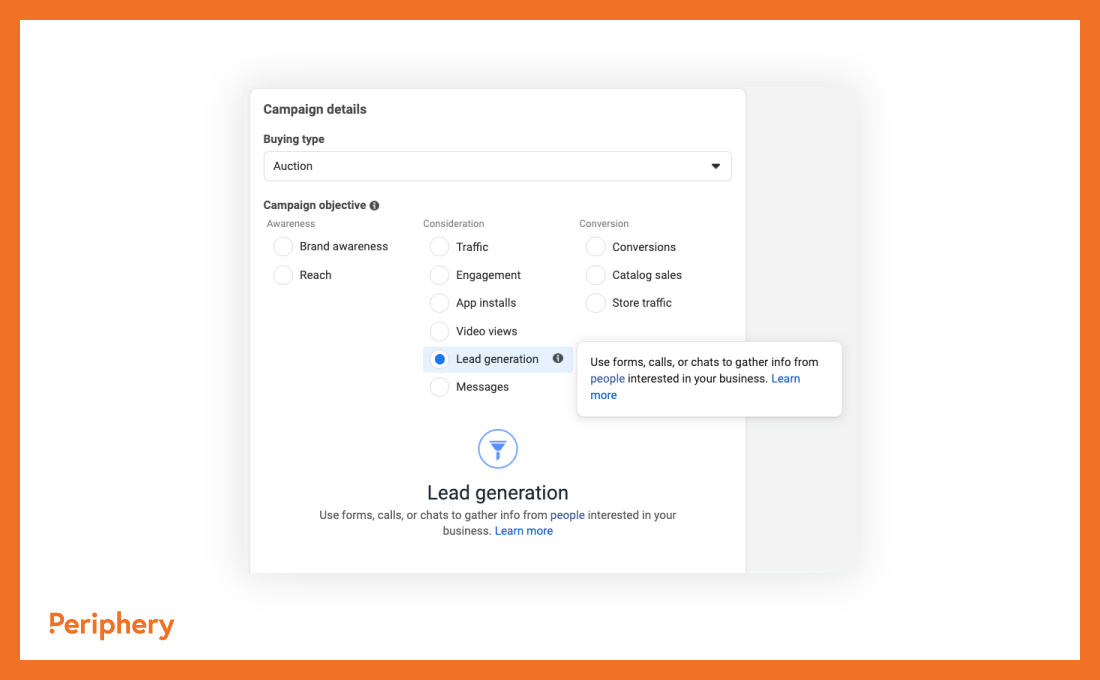
When your target customers click on your ad, they’ll be prompted to fill out a form that will be customized to your choosing. Form fields matching information from the users’ Facebook profile will be pre-filled, reducing friction. Lead ads are mobile-optimized, which makes a huge difference for Facebook’s 81.8% of solely mobile users.
Whenever you’re ready, you can download your lead data from the Facebook Ads Manager platform, access it through your integrated CRM system, or request it through the API with a webhook.
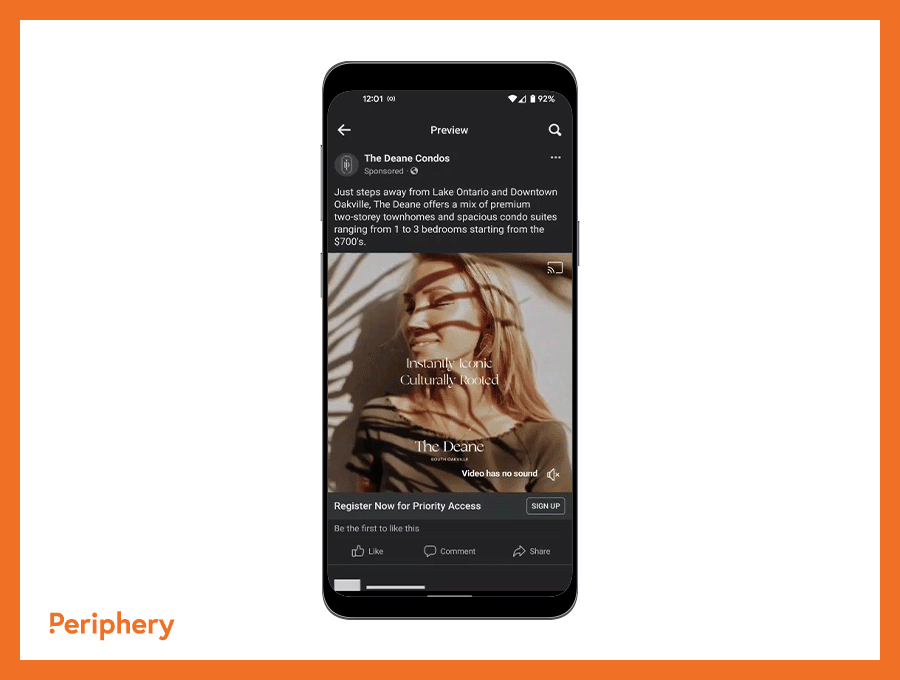
A huge advantage of lead ads is the fact that your users never need to leave Facebook. It takes time and resources to find leads for your business, and even the smallest amount of friction can result in your users dropping out of the funnel.
This does present one concern for marketers: if prospects don’t land on your website, you won’t be able to retarget them with future ads because they didn’t come in contact with your Facebook Pixel. But with privacy concerns only escalating, it’s within the realm of possibility that tracking pixels will be phased out eventually, and marketers will be forced to adapt by means of collecting first-party data.
What are Facebook Conversion Ads?
A Facebook conversion ad sends people off Facebook to complete an action. You can also use conversion ads to acquire leads by encouraging them to fill out a form on your website or landing page.
Facebook conversion ads would be a good choice for the following use cases:
- Directing users to a page to buy a product or add it to their cart
- Increase video views
- Increase website traffic
- Fill in a high intent form
To create this type of ad, you’ll choose the ‘conversions’ campaign objective in the ads manager.
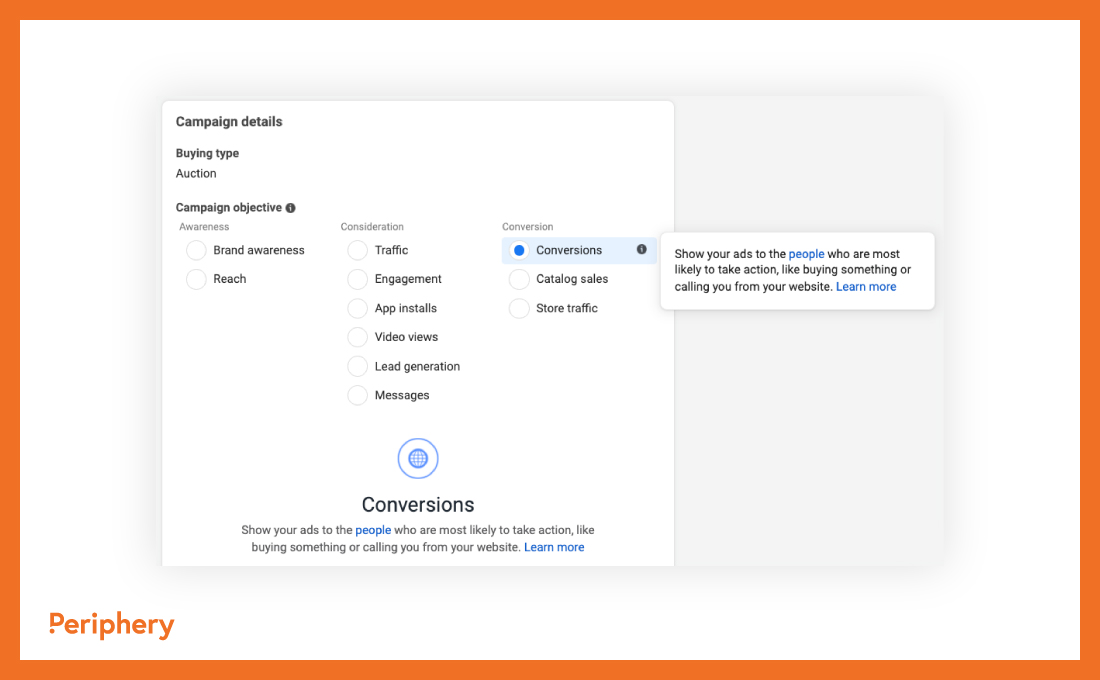
By taking your customers off of the Facebook platform, you run the risk of them dropping off due to having to complete more steps in the process from the time they see your ad, to getting what they want.
Thus, lead ads seem like the best solution, right?
Facebook Lead Ads And Conversions Ads: Which Are Better?
As marketers, this won’t be the first time you’ve heard this: it depends on your goals.
If you need to attract more traffic to your website, then conversion ads will be the best way to go. But choose lead ads if you want to build a customer list at a faster rate. Better yet, run an A/B test to see which performs better.
A concern with lead ads is that because they’re so easy to fill out, they can result in low-intent leads who aren’t as qualified for your offer. While this is true to some extent, there are strategies you can put in place to influence lead quality.
Improving the Quality of Your Facebook Leads
Anyone can become a lead when they sign up to your Facebook forms. However, that does not mean that they are interested in your products, services, or projects and will return. Remember that the prospects have not yet visited your website, checked out features and amenities, or read through your portfolios.
You can cultivate them so that they can turn to potential clients. Here are helpful tips to boost the quality of your Facebook leads:
1. Request more details in your form
Don’t simply ask for the name and email of the user alone. Be sure to include other details on contact information, demographics, or other questions relative to your offer. It can be a fine balance because you also don’t want to ask too many questions since netizens these days have limited attention spans.
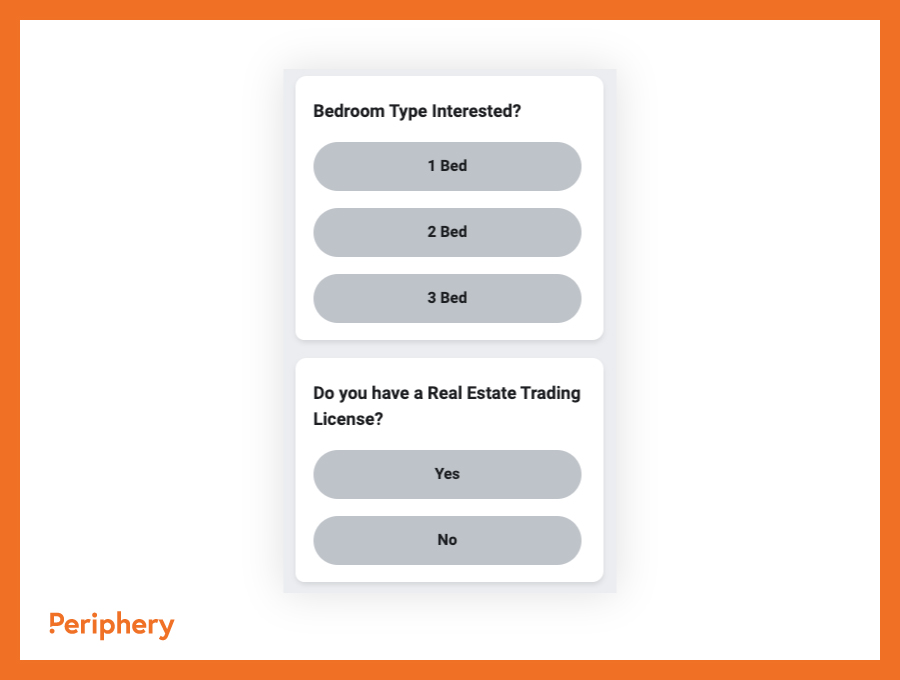
2. Follow up with your leads
Follow-ups are essential after collecting leads — you should contact them at the very latest three days after they fill out the form. If your offer and tech stack allow for it, you should use your CRM system to send an automated immediate follow-up email. If you wait for an extended period, your lead will probably lose interest in your business, forget you, and turn to competitors.
3. Be clear on your offer
Do not mislead your prospects. If your Facebook lead invites the prospects for a free subscription, make sure that the subscription is free. Misleading information will only result in poor-quality leads and damage the reputation of your business.
4. Create lookalike audiences from existing leads
Create a custom audience from your leads that have already filled out your form. You can use this list to create a lookalike audience of people who are similar to them, therefore, more likely to be qualified. If you’re in real estate, you can create a similar audience called a Special Ad Audience, which eliminates some discriminatory targeting parameters but is still effective in reaching your desired audience.
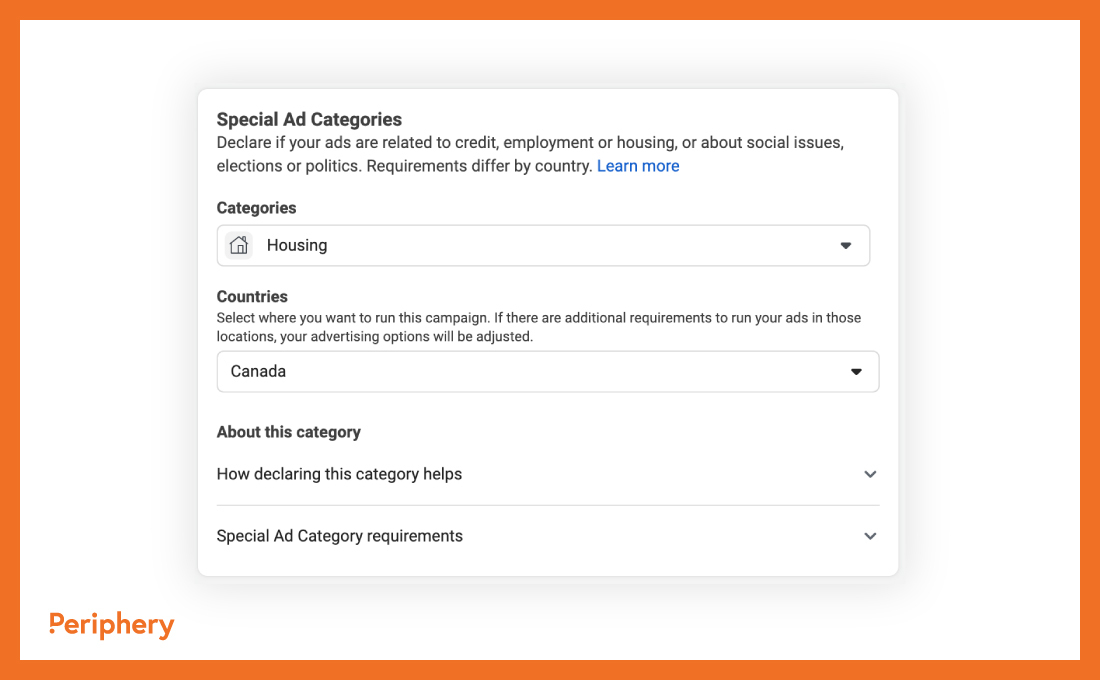
In Conclusion
In our comparison for Facebook lead ads vs conversion ads, we have noted two main clear differences.
- One – Facebook lead ads happen on Facebook, while conversion leads take the user off Facebook.
- Two – Facebook lead ads are used to collect prospects’ details in a form, while conversion ads collect clicks, video watches, purchases, and other actions that you desire (this can also include a form on a landing page).
There’s no right answer when it comes to which is better, but we will say we have seen some amazing results with lead ads for our clients and would recommend you give them a try if you’ve been mainly sticking to conversion ads.
Do you want to start running Facebook ads but don’t know where to start? It takes time, resources, and strategy to see success from your campaigns. At Periphery Digital, we closely work with our clients to help them deliver results that keep them coming back to us. Contact us for a free consultation to learn more about how we can help your organization grow.



